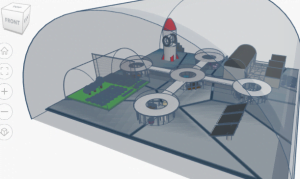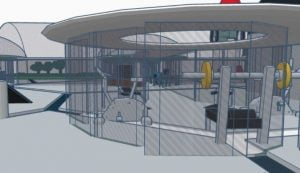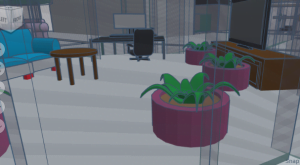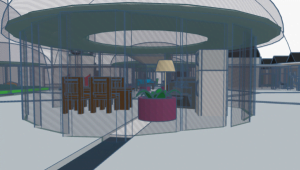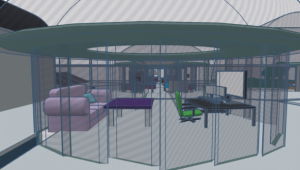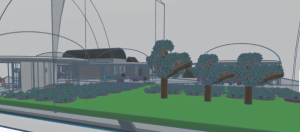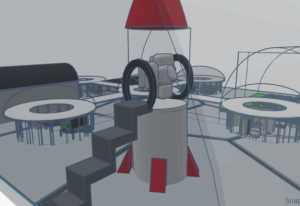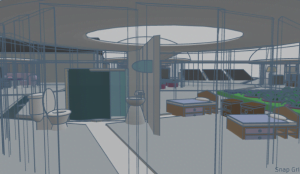Moon Camp Explorers Gallery 2020-2021
In Moon Camp Explorers each team’s mission is to 3D design a complete Moon Camp using Tinkercad. They also have to explain how they will use local resources, protect astronauts from the dangerous of space and describe the living and working facilities.
Team: Voyager
International School of Toulouse Colomiers France 12
External link for 3d
|
Project description
Our Moon Camp base is made of an inflatable material and insulated with glass fibre and polystyrene. It has one hut with a corridor connecting to the other huts around it. There is a hydroponics bay in a greenhouse with plants and an exterior rocket near that. Around the huts there is a sort of giant igloo made of lunar soil and rocks to protect from radiation. There are several probes which collect ice to make water, lunar soil to grow food, or simply gather exploratory information. |
|||
|
Where do you want to build your Moon Camp?
Close to the Lunar Poles Why did you choose this location?
The base will be on the Moon’s North pole for power extraction. The permanent exposure to the sun will permit the solar panels to use the consistent sunlight for power and electricity production. This location is also where the Moon’s ice is located, which could allow for eventual extraction of ice and conversion into useful water. How do you plan to build your Moon Camp? Which materials would you use?
Our base is an inflatable structure. Inflatables are lighter, less bulky and would provide more room than solid structures. The inflatables will also be cheaper and easier to carry in the rocket than solid structures. To insulate the structure, we will use glass fibre and polystyrene. Once the inflatable structure has been set up with the glass fibre and polystyrene, we will add a layer of Moon rocks to both the structure and the Moon rock igloo. Explain how your Moon Camp will provide the astronauts with:
|
|||
|
Water
|
Food
|
Electricity
|
Air
|
|
There is lunar ice at both poles of the moon. With that in mind we plan to send rovers to the ice, break it off and collect it. We would then melt it at high temperature to make it into drinkable water. Once we have the water, we will filter it and distillate it for further sterilization in order to ensure it is clean enough for both ingestion and use around the Camp. The filtration will remove dust and rocks and the distillation will remove the dissolved chemicals like salts. |
We will gather lunar soil and add human manure to it. We will then use that and organize it into a hydroponics bay. We will put earthworms in the soil harvested from the Earth. These worms recycle organic matter and improve soil structure, making them essential in creating a sustainable lunar garden. Then using seeds imported from Earth, we’ll grow plants and herbs to eat and to use for possible healing such as chamomile for wounds and ginger for nausea. |
We will use solar panels and use the cycles of the Moon to position them so that they will receive constant sunlight for maximal power. Our solar panels are monocrystalline. Although expensive to install, they are more efficient. To communicate with Earth, we will have a satellite. The satellite will be 2 metres tall and 3 metres wide (including the antenna disk). The antenna will contact a NASA satellite that will then contact NASA on Earth. This satellite is called a Lunar Parabola and is put at a certain angle so that it can communicate with satellites to the Earth. |
Oxygen exists plentifully in Moon dust, so we can use oxygen-harvesting plants to extract it by using a process called molten salt electrolysis. This involves placing lunar soil in a metal basket with molten calcium chloride salt to serve as an electrolyte. We will also recycle carbon dioxide to make oxygen. To do this, we will use Snake Plants as they are one of the best plants for turning carbon dioxide into oxygen. Once they have released the oxygen, we will harvest it and use it to breathe. |
|
Describe a day on the Moon for one of your Moon Camp astronauts
Firstly, all the astronauts will wake up in one of the rooms on the base. They will make breakfast from the plants in the hydroponics bay. After breakfast they get changed into clothes made from cotton also grown in the hydroponics bay. We will import some clothes from Earth but most of their clothes are made from the cotton. After changing into their clothes, they will check the hydroponics bay and make sure that the plants are growing well, there are no unhealthy ones and that the plants are hydrated. Our hydroponics bay grows herbs, vegetables, fruits and medical herbs. After checking the hydroponics bay, they will then check that the robots and probes that mine the ice to get water are working. The robots are remotely controlled so they won’t have to go outside into the Moon’s harsh environment. After that they check the status and functionality of the Moon Camp including inflatable structure. They then see what information the probes have collected on the Moon and analyse this information to contribute to overall research. It is a research project after all! After that they then have lunch. After lunch they have an hour and a half of leisure time and go to the gym to work out for an hour to keep fit and not become subject to the moon’s anti-gravity environment. After that they must check the solar panels. Then they are free for the rest of the day. |
|||



